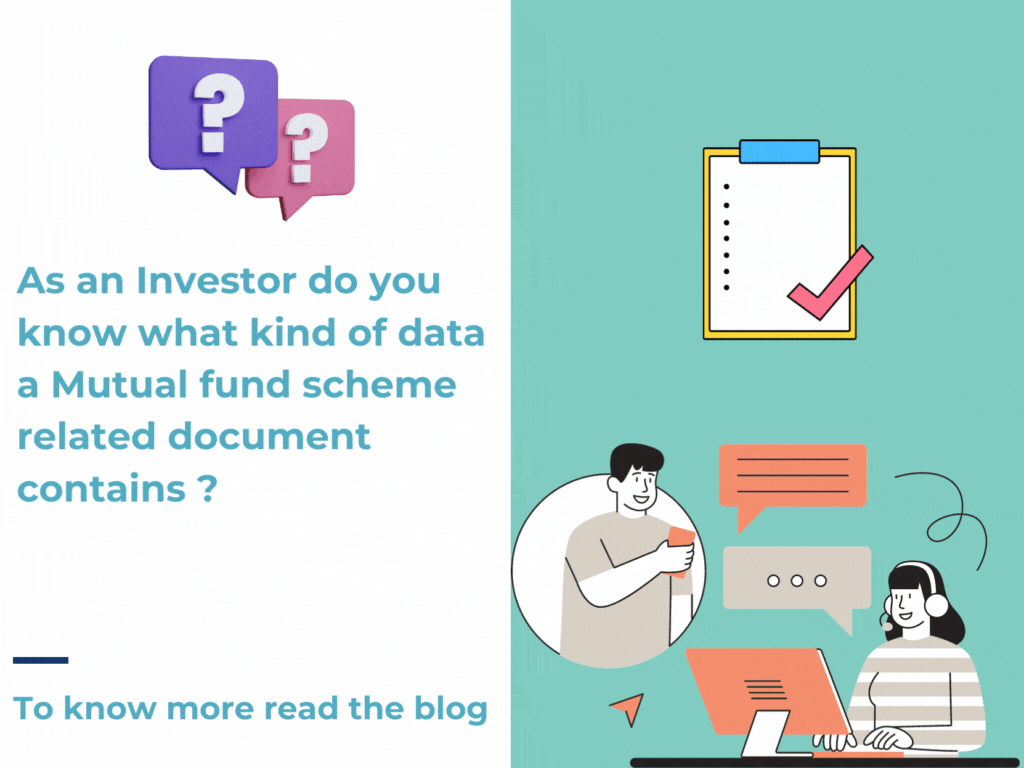As an Investor do you know what kind of data a Mutual fund scheme related document contains ?
As an investor, it is important to review the mutual fund scheme-related documents before making any investment decisions. These documents typically include the following information:
Scheme Information Document (SID): This document provides comprehensive details about the mutual fund scheme. It covers information such as the investment objective, investment strategy, asset allocation, risk factors, benchmark, fund manager details, expenses, and past performance.
Key Information Memorandum (KIM): The KIM is a summarized version of the SID, highlighting the key features of the scheme. It includes information about the scheme's investment objective, asset allocation, load structure, expenses, and risk factors.
Statement of Additional Information (SAI): The SAI provides additional information about the mutual fund scheme. It includes details about the fund house, legal structure, investment process, fund manager's background, dividend distribution policy, and other regulatory disclosures.
Offer Document: In case of a new fund offer (NFO), an offer document is provided. It contains information about the scheme's features, investment objective, asset allocation, fund manager, and subscription details.
Fund details: This section includes the fund's name, registration number, launch date, fund manager's name, and the names of other key personnel involved in managing the fund.
Investment portfolio: The document will provide details of the securities the mutual fund holds, such as stocks, bonds, or other assets. It may include information on the asset allocation, sector-wise distribution, and geographic diversification of the portfolio.
Performance history: The mutual fund document will typically provide historical performance data, including returns over various time periods (e.g., 1-year, 3-year, 5-year). This allows investors to assess how the fund has performed in different market conditions.
Risk factors: It is important for the document to disclose the potential risks associated with investing in the mutual fund. This section may highlight risks such as market volatility, interest rate changes, credit risk, and other factors that may affect the fund's performance.
Fees and expenses: The document will disclose the fees and expenses associated with investing in the mutual fund. This may include the management fee, administrative charges, sales loads, and other costs borne by investors.
Distribution channels: Mutual funds can be distributed through various channels, such as direct sales, brokers, or financial advisors. The document will provide information on how investors can buy or redeem units of the fund and any associated costs or restrictions.
Legal and regulatory information: The document will include legal disclaimers, terms and conditions, tax implications, and any other regulatory requirements that apply to the mutual fund.
It is crucial to thoroughly read and understand these documents to make informed investment decisions. If you have any specific questions or concerns, it's advisable to consult a financial advisor or reach out to the mutual fund company directly.


